|
(11) | EP 0 001 349 B1 |
| (12) | EUROPEAN PATENT SPECIFICATION |
|
|
| (54) |
N-substituted benzothiazolones and their use as herbicides and plant growth regulators N-substituierte Benzothiazolone und ihre Verwendung als Herbizide und als Pflanzenwachstumsregulierungsmittel Benzothiazolones N-substituées et leur emploi comme herbicides et comme régulateurs de croissance pour plantes |
|
|
|||||||||||||||||||||||
| Note: Within nine months from the publication of the mention of the grant of the European patent, any person may give notice to the European Patent Office of opposition to the European patent granted. Notice of opposition shall be filed in a written reasoned statement. It shall not be deemed to have been filed until the opposition fee has been paid. (Art. 99(1) European Patent Convention). |
[0002] Benzothiazolones have been described in French Patent 1248459, Offenlegungsschrift 2620789 and U.S. Patent 4075210, but the benzothiazolones of the present invention were not known nor was it known to use the benzothiazolones of the present invention as herbicides or plant growth regulators.
[0003] More particularly, the present invention is directed to N-substituted benzothiazolones characterized in that they have the formula
wherein R is selected from alkyl having from one to five carbon atoms ; alkenyl having from one to five carbon atoms ; hydroxyalkyl having from one to five carbon atoms ; haloalkyl having from one to five carbon atoms ; haloalkenyl having from one to five carbon atoms ; benzyl, quinolyl and
wherein R, and Rz are independently selected from hydrogen and halo ; R3 is selected from hydrogen, halo, amino, nitro, trifluoromethyl, alkyl having from one to five carbon atoms, alkoxy having from one to five carbon atoms, phthalimido and COOR4 : R4 is hydrogen or alkyl having from to five carbon atoms ; X is halo, and n is zero or one.
[0005] The invention also provides a method for inhibiting the growth of undesirable plants which comprises applying to the plant system a herbicidally effective amount of a compound characterized in that it has the formula
wherein R is selected from alkyl having from one to five carbon atoms ; alkenyl having from one to five carbon atoms ; hydroxyalkyl having from one to five carbon atoms ; haloalkyl having from one to five carbon atoms ; haloalkenyl having from one to five carbon atoms ; benzyl, quinolyl, and
wherein R1 and R2 are independently selected from hydrogen and halo ; R3 is selected from hydrogen, halo, amino, nitro, trifluoromethyl, alkyl having from one to five carbon atoms, alkoxy having from one to five carbon atoms, phthalimido and COOR4 ; wherein R4 is hydrogen or alkyl having from one to five carbon atoms ; X is halo, and n is zero or one.
[0006] A further aspect of the invention is that it provides an agricultural chemical composition characterized in that it contains from 1 to 99 parts by weight of a compound having the formula.
wherein R is selected from alkyl having from one to five carbon atoms ; alkenyl having from one to five carbon atoms ; hydroxyalkyl having from one to five carbon atoms ; haloalkyl having from one to five carbon atoms ; haloalkenyl having from one to five carbon atoms ; benzyl, quinolyl and
wherein R1and R2 are independently selected from hydrogen and halo ; R3 is selected from hydrogen, halo, amino, nitro, trifluoromethyl, alkyl having from one to five carbon atoms, alkoxy having from one to five carbon atoms, phthalimido and COOR4 ; wherein R4 is hydrogen or alkyl having from one to five carbon atoms, X is halo, and n is zero or one ; the remaining parts being comprised of one or more suitable carriers, diluents and/or adjuvants.
[0007] The invention further provides a method for regulating the growth of leguminous plants which comprises applying to the plant system an effective non-lethal amount of a compound characterized in that it has the formula
wherein R is selected from alkyl having from one to five carbon atoms ; alkenyl having from one to five carbon atoms ; hydroxyalkyl having from one to five carbon atoms ; haloalkyl having from one to five carbon atoms ; haloalkenyl having from one to five carbon atoms ; benzyl, quinolyl, and
wherein R1 and R2 are independently selected from hydrogen and halo ; R3 is selected from hydrogen, halo, amino, nitro, trifluoromethyl, alkyl having from one to five carbon atoms, alkoxy having from one to five carbon atoms, phthalimido and COOR4 ; wherein R4 is hydrogen or alkyl having from one to five carbon atoms ; X is halo, and n is zero or one.
[0008] Generally, the N-substituted benzothiazolones of the invention may be prepared in accordance with the following reaction :
2-Oxo-3-benzothiazolineacetyl chloride may be prepared by adding an excess of a chlorinating agent, e.g., thionyl chloride, to 2-oxo-3-benzothiazolineacetic acid dissolved in benzene.
[0009] As indicated in the above equation, the appropriate mercaptan, potassium hydroxide and a solvent, e.g., acetone or tetrahydrofuran, are stirred for a short period of time. To this stirred mixture is added a stoichiometric equivalent of 2-oxo-3-benzothiazolineacetyl chloride or a halogenated 2-oxo-3-benzothia- zolineacetyl chloride.
[0010] The following Examples are presented as an illustration of the manner in which the novel compounds of this invention can be prepared.
Example 1
[0012] A charge containing 0.1 moles of 2-mercaptoquinoline, 0.1 moles of 85 % potassium hydroxide and 250 ml of acetone is stirred for 10 minutes. To this stirred mixture is added 0.1 moles of 2-oxo-3-benzothiazolineacetyl chloride in one portion. An exothermic reaction set in causing a temperature rise from 30 °C to about 40 °C. After stirring at room temperature for about 24 hours, 800 grams of cold water is added and stirring continued at 0-10 °C for about 1 hour. The solid is then collected by filtration, washed with water until neutral to litmus and air-dried at 25-30 °C. Analytical data is summarized in Table I, below.
Example 2
[0014] The procedure of Example 1 was repeated utilizing o-aminobenzenethiol as the reactant in lieu of 2-mercaptoquinoline and tetrahydrofuran in lieu of acetone. Analytical data is summarized in Table I, below.
Example 3
[0016] A charge containing 0.1 mole of benzenethiol, 0.1 mole of 85 % potassium hydroxide and 250 ml of acetone is stirred as in Example 1. To this mixture, 0.1 mole of 5-chloro-2-oxo-3-benzothiazolineacetyl chloride is added in one portion. The remaining steps of Example 1 are then followed. Analytical data is summarized in Table I, below.
Example 4
[0018] The procedure of Example 3 was followed utilizing 2-oxo-3-benzothiazolineacetyl chloride in lieu of 5-chloro-2-oxo-3-benzothiazolineacetyl chloride.
[0019] Utilizing the procedure of Example 4, the following compounds were prepared. Analytical data may be found in Table I, below.
Example 16
[0021] A charge containing 0.1 mole of mercaptoethanol, 0.1 mole of 85 % potassium hydroxide and 250 ml of acetone is stirred for 10 minutes. To this stirred mixture is added 0.1 mole of 2-oxo-3-benzothiazolinea- cetyl chloride in one portion. An exothermic reaction set in causing a temperature rise from 30 to about 40°C. After stirring for about 24 hours at room temperature, 500 ml of water and 500 ml of ethyl ether are added and stirring continued at 25-30 °C for 15 minutes. The separated ether layer is washed with water until neutral to litmus and dried over sodium sulfate. The ether is removed in vacuo at a maximum temperature of 80-90 °C for 1-2 minutes. Analytical data is summarized in Table I, below.
Example 17
[0024] A charge containing 0.1 mole of o-thiosalicylic acid, 0.2 mole of 85 % potassium hydroxide, 200 ml of dimethylformamide and 10 ml of water is stirred for 10 minutes. To this stirred solution at 30°C, is added 0.1 mole of 2-oxo-3-benzothiazolineacetyl chloride. An exothermic reaction set in causing a temperature rise from 30 to 47 °C. After stirring at room temperature for 24 hours, 700 ml of water and 20 grams of concentrated hydrochloric acid are added. The reaction mixture is stirred at 0 to 10 °C for 2 hours. The solid is collected by filtration, washed with water until neutral to litmus and air-dried at room temperature. The product, mp 161-3 °C, was obtained in 61 % yield.
Anal. Calc'd. for C16H11NO4O2-H2O : C, 52.88 ; H, 3.61 ; N, 3.85 ; S, 17.65.
Found : C, 52.88 ; H, 3.75 ; N, 3.38 ; S, 17.86.
Example 18
[0026] S-Methyl 2-oxo-3-benzothiazolineethanethioate may be prepared in accordance with the procedure of Example 1 by replacing mercaptoquinoline by methylthiol. S-Methyl 2-oxo-3-benzothiazolineetha- nethioate has a melting point of 146-7 °C.
[0027] The N-substituted benzothiazolone compounds of the foregoing formula have been found to be herbicidally effective in controlling the growth of undesired vegetation. The compounds have been found to be herbicidally effective when applied to the soil in what is known in the art as a pre-emergent treatment. They have further been found to be herbicidally effective when applied foliarly to the plants, in what is known as a post-emergent treatment.
[0028] As used herein, the term " active ingredient " is understood to mean an N-substituted benzothiazolone of the foregoing formula.
[0029] To illustrate the herbicidal properties of the N-substituted benzothiazolones, said compounds were tested in the following manner.
[0031] A good grade of top soil was placed in aluminum pans and compacted to a depth of 1.27 centimeter from the top of the pan. On the top of the soil was placed a predetermined number of seeds or vegetative propagules of various plant species. The soil required to level fill the pans after seeding or adding vegetative propagules was weighed into a pan. A known amount of the active ingredient applied in a solvent or as a wettable powder and the soil were thoroughly mixed, and used as a cover layer for prepared pans. After treatment the pans were moved into a greenhouse bench where they were watered from below as needed to give adequate moisture for germination and growth.
[0032] Unless noted otherwise, approximately 28 days after seeding and treating, the plants were observed to determine all deviations from the normal growth habit and the results recorded. A herbicidal rating code was used to signify the extent of phytotoxicity of each species. The ratings are defined as follows :
[0033] The plant species utilized in these tests are identified by letter in accordance with the following legend :
[0036] The active ingredients are applied in spray form to two or three-week old specimens of various plant species. The spray, a solution or wettable powder suspension containing the appropriate rate of active ingredient to give the desired test rate and a surfactant, is applied to the plants. The treated plants are placed in a greenhouse and unless otherwise noted approximately four weeks later the effects are observed and recorded. The results are shown in Tables IV and V in which the post-emergent herbicidal rating code is as follows :
The plant species utilized in these tests are identified by letter in accordance with the previous legend.
[0037] As can be seen from the above tables, the N-substituted benzothiazolone compounds of the invention possess significant herbicidal activity. They are especially effective in inhibiting the growth of broadleaf weeds. A review of the above data leads to the conclusion that the compounds of the invention may be applied to narrowleaf crops, such as wheat, rice and sorghum to selectively inhibit the growth of weeds, especially broadleaf weeds.
[0038] The compounds of the invention have also been found to be effective in regulating the growth of leguminous plants, such as soybeans.
[0039] As used herein, the regulation of " plant growth or development " is understood to mean the modification of the normal sequential development of a treated desirable plant to agricultural maturity. Such modifications are most readily observed as changes in size, shape, color or texture of the treated plant or any of its parts. Similarly, changes in the quantity of plant fruit or flowers are also quite apparent from visual inspection. The above changes may be characterized as an acceleration or retardation of plant growth, stature reduction, leaf or canopy alteration, increased branching, terminal inhibition, increased flowering, defoliation, increased root growth, increased cold hardiness and the like. While many of these modifications are desirable in and of themselves, most often it is their effect on the economic result that is of most importance. For example, a reduction in stature of the plant permits the growing of more plants per unit area. A darkening of the foliar color may be illustrative of higher chlorophyll activity indicative of improved rate of photosynthesis.
[0040] Although the regulation of plant growth in accordance with the present invention may include partial inhibition of plant growth, it does not include the total inhibition or killing of such plants. The present invention contemplates the use of an amount of active ingredient which will modify the normal sequential development of the treated plant to agricultural maturity. Such plant growth regulating amounts may vary, not only with the material selected, but also with the modifying effect desired, the species of plant and its stage of development, the plant growth medium and whether a permanent or a transitory effect is sought. It is, however, well within the skill of the art to determine the amount of active ingredient required.
[0041] Modification of the plants may be accomplished by applying the active ingredient to seeds, emerging seedlings, roots, stems, leaves, flowers, fruits or other plant parts. Such application may be made directly to the plant part, or indirectly by application to the plant growth medium.
[0042] Utilizing the N-substituted benzothiazolones as the active ingredient in a plant growth regulating composition, said compounds were found to possess piant growth regulating activity when tested in accordance with the following procedure.
[0043] A number of soybean plants, variety Williams, were grown from seeds in plastic pots in the greenhouse for a period of one week at which time the plants are thinned to one plant per pot. When the second trifoliate leaf (three weeks) was fully expanded, the plants were treated with a solution of the active ingredient in acetone and water. Aqueous Tween 20 was used as a surfactant.
[0044] When the fifth trifoliate leaf (four to five weeks) was fully expanded, the treated plants were compared with the non-treated control plants and the observations recorded. Results of these tests are summarized in Table VI, below.
[0045] The above data illustrate that the compounds of the invention may be used as a herbicide or a plant growth regulant. When used as a herbicide, it is desirable that rates of application above 2.24 kilograms per hectare be utilized. When used to regulate the growth of desirable plants, rats below 5.6 kilograms per hectare especially 0.56 to 3.36 are preferred.
[0046] In selecting the appropriate time and rate of application of the active ingredient, it will be recognized that precise rates will also be dependent upon the desired response, mode of application, plant variety, soil conditions and various other factors known to those skilled in the art. While a rate of about 0.056 to 5.6 kilos per hectare is preferred, higher rates of up to 56 kilos per hectare imay be used, depending upon the factors noted above. In addition, it will be recognized that single or multiple applications may be used to exert the desired response.
[0047] When operating in accordance with the present invention, effective amounts of the active ingredients are applied to the plant system. By application to the plant system is meant the application of the active ingredient in or on soil or plant growth media and/or applied to above ground portions of plants in any convenient fashion. Application to the soil or growth media can be carried out by simply mixing with the soil, by applying to the surface of the soil and thereafter dragging or discing into the soil to the desired depth, or by employing a liquid carrier to accomplish the penetration and impregnation. The application of liquid and particulate solid herbicidal formulations to the surface of soil or to above ground portions of plants can be carried out by conventional methods, e.g. powder dusters, boom and hand sprayers and spray dusters. The formulations can also be applied from airplanes as a dust or a spray because of their effectiveness at low dosages. In a further method, the distribution of the active ingredients in soil can be carried out by admixture with the water employed to irrigate the soil. In such procedures, the amount of water can be varied with the porosity and water holding capacity of the soil to obtain the desired depth of distribution of the active ingredients.
[0048] As noted, the active ingredient can be used alone or in combination with other pesticides or a material referred to in the art as an adjuvant in either liquid or solid form. To prepare such compositions, the active ingredient is admixed with an adjuvant including diluents, extenders, carriers and conditioning agents to provide compositions in the form of finely-divided particulate solids, granules, pellets, wettable powders, dusts, solutions and aqueous dispersions or emulsions. Thus, the active ingredient can be used with an adjuvant such as a finely-divided particulate solid, a solvent liquid of organic origin, water, a wetting agent, dispersing agent or emulsifying agent or any suitable combination of these.
[0049] Illustrative finely-divided solid carriers and extenders which are useful in plant growth regulating compositions of this invention include the talcs, clays, pumice, silica, diatomaceous earth, quartz, Fullers earth, sulfur, powdered cork, powdered wood, walnut flour, chalk, tobacco dust, and charcoal. Typical liquid diluents include Stoddard solvent, acetone, alcohols, glycols, ethyl acetate and benzene. The compositions of this invention, particularly liquids and wettable powders, usually contain one or more surface-active agents in amounts sufficient to render a given composition readily dispersible in water or in oil. The term " surface-active agent " is understood to include wetting agents, dispersing agents, suspending agents and emulsifying agents. Such surface-active agents are well known and reference is made to U.S. Patent No. 2,547,724, Columns 3 and 4, for detailed examples of the same.
[0050] Compositions of this invention generally contain from about 1 to 99 parts active ingredient, about 1 to 50 parts surface-active agent and about 4 to 94 parts solvents, all parts being by weight based on the total weight of the composition.
[0051] Although this invention has been described with respect to specific modifications, the details thereof are not to be construed as limitations, for it will be apparent that various equivalents, changes and modifications may be resorted to without departing from the scope thereof and it is understood that such equivalent embodiments are intended to be included herein.
1. A compound characterized in that it has the formula

wherein R is selected from alkyl having from one to five carbon atoms : alkenyl having from one to five carbon atoms ; hydroxyalkyl having from one to five carbon atoms ; haloalkyl having from one to five carbon atoms ; haloalkenyl having from one to five carbon atoms : benzyl, quinolyl, and
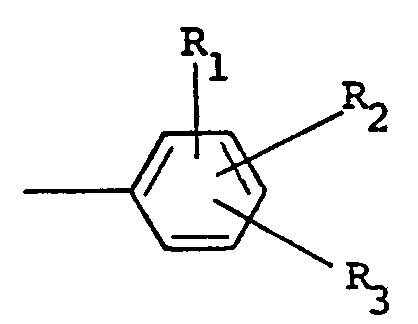
wherein R1 and R2are independently selected from hydrogen and halo ; R3 is selected from hydrogen, halo, amino, nitro, trifluoromethyl, alkyl having from one to five carbon atoms, alkoxy having from one to five carbon atoms, phthalimido and COOR4 ; wherein R4 is hydrogen or alkyl having from one to five carbon atoms ; X is halo and n is zero or one.
wherein R is selected from alkyl having from one to five carbon atoms : alkenyl having from one to five carbon atoms ; hydroxyalkyl having from one to five carbon atoms ; haloalkyl having from one to five carbon atoms ; haloalkenyl having from one to five carbon atoms : benzyl, quinolyl, and
wherein R1 and R2are independently selected from hydrogen and halo ; R3 is selected from hydrogen, halo, amino, nitro, trifluoromethyl, alkyl having from one to five carbon atoms, alkoxy having from one to five carbon atoms, phthalimido and COOR4 ; wherein R4 is hydrogen or alkyl having from one to five carbon atoms ; X is halo and n is zero or one.
2. A compound according to Claim 1 characterized in that Ri, Rz and R3 are chloro, and n is zero.
3. A compound according to Claim 1 characterized in that it is S-(2'-quinolyl) 2-oxo-3-benzothiazoli-
neethanethioate, S-[(m-phthalimido-(phenyl)] 2-oxo-3-benzothiazolineethanethioate,
or S-[(p-phthalimido-(phenyl)] 2-oxo-3-benzothiazolineethanethioate.
4. A method for inhibiting the growth of undesirable plants which comprises applying
to the plant system a herbicidally effective amount of compound characterized in that
it has the formula

wherein R is selected from alkyl having from one to five carbon atoms ; alkenyl having from one to five carbon atoms ; hydroxyalkyl having from one to five carbon atoms ; haloalkyl having from one to five carbon atoms : haloalkenyl having from one to five carbon atoms : benzyl, quinolyl, and

wherein R, and R2 are independently selected from hydrogen and halo ; R3 is selected from hydrogen, halo, amino, nitro, trifluoromethyl, alkyl having from one to five carbon atoms, alkoxy having from one to five carbon atoms, phthalimido and COOR4 ; wherein R4 is hydrogen or alkyl having from one to five carbon atoms ; X is halo and n is zero or one.
wherein R is selected from alkyl having from one to five carbon atoms ; alkenyl having from one to five carbon atoms ; hydroxyalkyl having from one to five carbon atoms ; haloalkyl having from one to five carbon atoms : haloalkenyl having from one to five carbon atoms : benzyl, quinolyl, and
wherein R, and R2 are independently selected from hydrogen and halo ; R3 is selected from hydrogen, halo, amino, nitro, trifluoromethyl, alkyl having from one to five carbon atoms, alkoxy having from one to five carbon atoms, phthalimido and COOR4 ; wherein R4 is hydrogen or alkyl having from one to five carbon atoms ; X is halo and n is zero or one.
5. A method according to Claim 4 characterized in that R1, R2 and R3 are chloro and n is zero.
6. A method according to Claim 4 characterized in that said compound is S-(2'-quinolyl)
2-oxo-3-benzothiazolineethanethioate, S-[(m-phthalimido (phenyl)] 2-oxo-3-benzothiazolineethanethioate
or S-[(p-phthalimido (phenyl)] 2-oxo-3-benzothiazolineethanethioate.
7. A method for regulating the growth of leguminous plants which comprises applying
to the plant system an effective non-lethal amount of a compound characterized in
that it has the formula
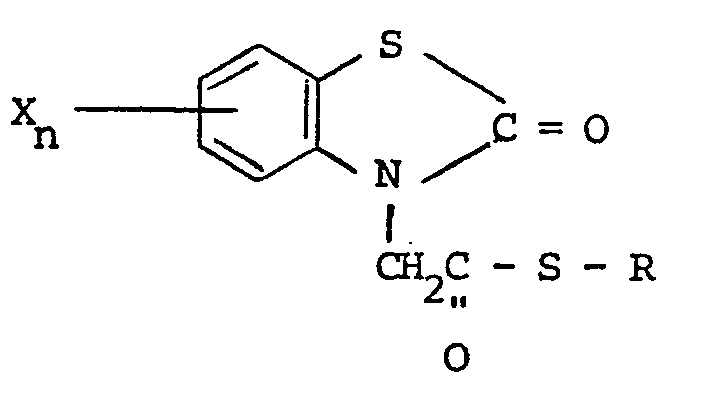
wherein R is selected from alkyl having from one to five carbon atoms ; alkenyl having from one to five carbon atoms : hydroxyalkyl having from one to five carbon atoms ; haloalkyl having from one to five carbon atoms : haloalkenyl having from one to five carbon atoms ; benzyl, quinolyl and
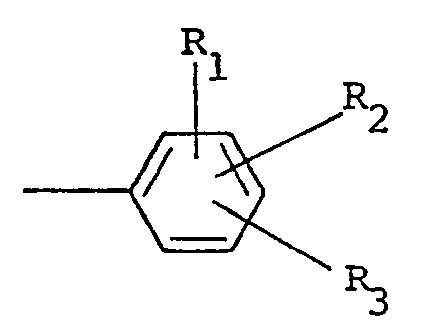
wherein R, and R2 are independently selected from hydrogen and halo ; R3 is selected from hydrogen, halo, amino, nitro, trifluoromethyl, alkyl having from one to five carbon atoms, alkoxy having from one to five carbon atoms, phthalimido and COOR4 ; wherein R4 is hydrogen or alkyl having from one to five carbon atoms ; X is halo and n is zero or one.
wherein R is selected from alkyl having from one to five carbon atoms ; alkenyl having from one to five carbon atoms : hydroxyalkyl having from one to five carbon atoms ; haloalkyl having from one to five carbon atoms : haloalkenyl having from one to five carbon atoms ; benzyl, quinolyl and
wherein R, and R2 are independently selected from hydrogen and halo ; R3 is selected from hydrogen, halo, amino, nitro, trifluoromethyl, alkyl having from one to five carbon atoms, alkoxy having from one to five carbon atoms, phthalimido and COOR4 ; wherein R4 is hydrogen or alkyl having from one to five carbon atoms ; X is halo and n is zero or one.
8. A method according to Claim 7 characterized in that R1, R2 and R3 are chloro and n is zero.
9. A method according to Claim 7 characterized in that said compound is S-(2'-quinolyl)
2-oxo-3-benzothiazolineethanethioate, S-[(m-phthalimido(phenyl)] 2-oxo-3-benzothiazolineethanethioate
or S-[(p-phthalimido(phenyl)] 2-oxo-3-benzothiazolineethanethioate.
10. An agricultural chemical composition characterized in that it contains from 1
to 99 parts by weight of a compound having the formula

wherein R is selected from alkyl having from one to five carbon atoms ; alkenyl having from one to five carbon atoms ; hydroxyalkyl having from one to five carbon atoms ; haloalkyl having from one to five carbon atoms ; haloalkenyl having from one to five carbon atoms ; benzyl, quinolyl and
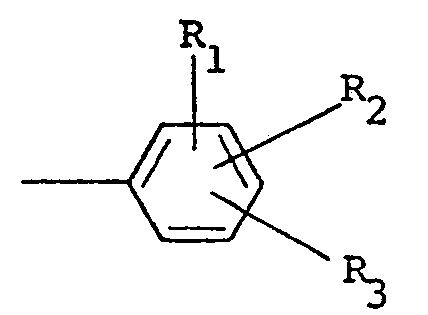
wherein R1 and R2 are independently selected from hydrogen and halo ; R3 is selected from hydrogen, halo, amino, nitro, trifluoromethyl, alkyl having from one to five carbon atoms, alkoxy having from one to five carbon atoms, phthalimido and COOR4, wherein R4 is hydrogen or alkyl having from one to five carbon atoms ; X is halo, and n is zero or one ; the remaining parts being comprised of one or more suitable carriers, diluents and/or adjuvants.
wherein R is selected from alkyl having from one to five carbon atoms ; alkenyl having from one to five carbon atoms ; hydroxyalkyl having from one to five carbon atoms ; haloalkyl having from one to five carbon atoms ; haloalkenyl having from one to five carbon atoms ; benzyl, quinolyl and
wherein R1 and R2 are independently selected from hydrogen and halo ; R3 is selected from hydrogen, halo, amino, nitro, trifluoromethyl, alkyl having from one to five carbon atoms, alkoxy having from one to five carbon atoms, phthalimido and COOR4, wherein R4 is hydrogen or alkyl having from one to five carbon atoms ; X is halo, and n is zero or one ; the remaining parts being comprised of one or more suitable carriers, diluents and/or adjuvants.
11. A composition according to Claim 10 characterized in that Ri, R2 and R3 are chloro and n is zero.
12. A composition according to Claim 10 characterized in that said compound is S-(2'-quinolyl)
2-oxo-3-benzothiazolineethanethioate, S-[(m-phthalimido(phenyl)] 2-oxo-3-benzothiazolineethanethioate
or S-[(p-phthalimido(phenyl)] 2-oxo-3-benzothiazolineethanethioate.
1. Verbindung der allgemeinen Formel

in welcher R Alkyl mit 1 bis 5 Kohlenstoffatomen, Alkenyl mit 1 bis 5 Kohlenstoffatomen, Hydroxyalkyl mi1 1 bis 5 Kohlenstoffatomen, Halogenalkyl mit 1 bis 5 Kohlenstoffatomen, Halogenalkenyl mit 1 bis 5 Kohlenstoffatomen, Benzyl, Chinolyl oder ein Rest der nachstehenden allgemeinen Formel

bedeutet, in der R1und R2, unabhängig voneinander, Wasserstoff und Halogen sind, R3 Wasserstoff, Halogen, Amino, Nitro, Trifluormethyl, Alkyl mit 1 bis 5 Kohlenstoffatomen, Alkoxy mit 1 bis 5 Kohlenstoffatomen, Phthalimido oder -COOR4 ist, wobei R4 Wasserstoff oder Alkyl mit 1 bis 5 Kohlenstoffatomen ist, der Rest X Halogen bedeutet und der Index n den Wert 0 oder 1 aufweist.
in welcher R Alkyl mit 1 bis 5 Kohlenstoffatomen, Alkenyl mit 1 bis 5 Kohlenstoffatomen, Hydroxyalkyl mi1 1 bis 5 Kohlenstoffatomen, Halogenalkyl mit 1 bis 5 Kohlenstoffatomen, Halogenalkenyl mit 1 bis 5 Kohlenstoffatomen, Benzyl, Chinolyl oder ein Rest der nachstehenden allgemeinen Formel
bedeutet, in der R1und R2, unabhängig voneinander, Wasserstoff und Halogen sind, R3 Wasserstoff, Halogen, Amino, Nitro, Trifluormethyl, Alkyl mit 1 bis 5 Kohlenstoffatomen, Alkoxy mit 1 bis 5 Kohlenstoffatomen, Phthalimido oder -COOR4 ist, wobei R4 Wasserstoff oder Alkyl mit 1 bis 5 Kohlenstoffatomen ist, der Rest X Halogen bedeutet und der Index n den Wert 0 oder 1 aufweist.
2. Verbindung nach Anspruch 1, dadurch gekennzeichnet, daß die Reste R1,R2 und R3 Chlor sind und der Index n den Wert 0 besitzt.
3. Verbindung nach Anspruch 1, dadurch gekennzeichnet, daß sie S-(2'-Chinolyl)-2-oxo-3-benzothia-
zolinäthanthioat, S-[(m-Phthalimido-(phenyl)]-2-oxo-3-benzothiazolinäthanthioat oder
S-[(p-Phthalimido-(phenyl)]-2-oxo-3-benzothiazolinäthanthioat ist.
4. Verfahren zur Inhibierung des Wachstums unerwünschter Pflanzen, bei welchem man
auf das Pflanzensystem eine herbicid wirksame Menge einer Verbindung aufbringt, dadurch
gekennzeichnet, daß die Verbindung die nachfolgende allgemeine Formel
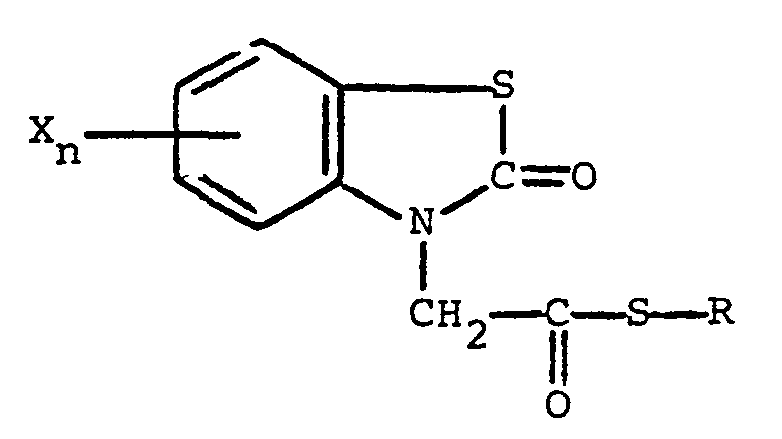
besitzt, in welcher R Alkyl mit 1 bis 5 Kohlenstoffatomen, Alkenyl mit 1 bis 5 Kohlenstoffatomen, Hydroxyalkyl mit 1 bis 5 Kohlenstoffatomen, Halogenalkyl mit 1 bis 5 Kohlenstoffatomen, Halogenalkenyl mit 1 bis 5 Kohlenstoffatomen, Benzyl, Chinolyl oder ein Rest der nachstehenden allgemeinen Formel

bedeutet, in der R, und R2,unabhängig voneinander, Wasserstoff und Halogen sind, R3 Wasserstoff, Halogen, Amino, Nitro, Trifluormethyl, Alkyl mit 1 bis 5 Kohlenstoffatomen, Alkoxy mit 1 bis 5 Kohlenstoffatomen, Phthalimido oder -COOR4 ist, wobei R4 Wasserstoff oder Alkyl mit 1 bis 5 Kohlenstoffatomen ist, der Rest X Halogen bedeutet und der Index n den Wert 0 oder 1 aufweist.
besitzt, in welcher R Alkyl mit 1 bis 5 Kohlenstoffatomen, Alkenyl mit 1 bis 5 Kohlenstoffatomen, Hydroxyalkyl mit 1 bis 5 Kohlenstoffatomen, Halogenalkyl mit 1 bis 5 Kohlenstoffatomen, Halogenalkenyl mit 1 bis 5 Kohlenstoffatomen, Benzyl, Chinolyl oder ein Rest der nachstehenden allgemeinen Formel
bedeutet, in der R, und R2,unabhängig voneinander, Wasserstoff und Halogen sind, R3 Wasserstoff, Halogen, Amino, Nitro, Trifluormethyl, Alkyl mit 1 bis 5 Kohlenstoffatomen, Alkoxy mit 1 bis 5 Kohlenstoffatomen, Phthalimido oder -COOR4 ist, wobei R4 Wasserstoff oder Alkyl mit 1 bis 5 Kohlenstoffatomen ist, der Rest X Halogen bedeutet und der Index n den Wert 0 oder 1 aufweist.
5. Verfahren nach Anspruch 4, dadurch gekennzeichnet, daß die Reste Ri, R2 und R3 Chlor sind und der Index n den Wert 0 besitzt.
6. Verfahren nach Anspruch 4, dadurch gekennzeichnet, daß die Verbindung S-(2'-Chinolyl)-2-oxo-3-benzothiazolinäthanthioat,
S-[(m-Phthalimido-(phenyl)]-2-oxo-3-benzothiazolinäthanthioat oder S-[(p-Phthalimido-(phenyl)]-2-oxo-3-benzothiazolinäthanthioat
ist.
7. Verfahren zur Regulierung des Wachstums von leguminosen Pflanzen durch Aufbringen
einer wirksamen, nicht-letalen Menge einer Verbindung auf das Pflanzensystem, dadurch
gekennzeichnet, daß die Verbindung die nachstehende allgemeine Formel
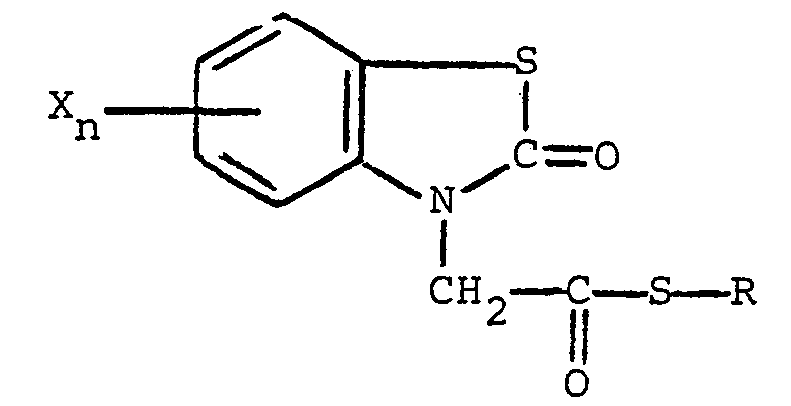
besitzt, in welcher R Alkyl mit 1 bis 5 Kohlenstoffatomen, Alkenyl mit 1 bis 5 Kohlenstoffatomen, Hydroxyalkyl mit 1 bis 5 Kohlenstoffatomen, Halogenalkyl mit 1 bis 5 Kohlenstoffatomen, Halogenalkenyl mit 1 bis 5 Kohlenstoffatomen, Benzyl, Chinolyl oder ein Rest der nachstehenden allgemeinen Formel
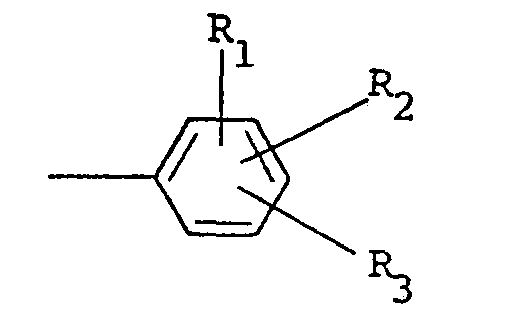
bedeutet, in der R, und R2, unabhängig voneinander, Wasserstoff und Halogen sind, R3 Wasserstoff, Halogen, Amino, Nitro, Trifluormethyl, Alkyl mit 1 bis 5 Kohlenstoffatomen, Alkoxy mit 1 bis 5 Kohlenstoffatomen, Phthalimido oder -COOR4 ist, wobei R4 Wasserstoff oder Alkyl mit 1 bis 5 Kohlenstoffatomen ist, der Rest X Halogen bedeutet und der Index n den Wert 0 oder 1 aufweist.
besitzt, in welcher R Alkyl mit 1 bis 5 Kohlenstoffatomen, Alkenyl mit 1 bis 5 Kohlenstoffatomen, Hydroxyalkyl mit 1 bis 5 Kohlenstoffatomen, Halogenalkyl mit 1 bis 5 Kohlenstoffatomen, Halogenalkenyl mit 1 bis 5 Kohlenstoffatomen, Benzyl, Chinolyl oder ein Rest der nachstehenden allgemeinen Formel
bedeutet, in der R, und R2, unabhängig voneinander, Wasserstoff und Halogen sind, R3 Wasserstoff, Halogen, Amino, Nitro, Trifluormethyl, Alkyl mit 1 bis 5 Kohlenstoffatomen, Alkoxy mit 1 bis 5 Kohlenstoffatomen, Phthalimido oder -COOR4 ist, wobei R4 Wasserstoff oder Alkyl mit 1 bis 5 Kohlenstoffatomen ist, der Rest X Halogen bedeutet und der Index n den Wert 0 oder 1 aufweist.
8. Verfahren nach Anspruch 7, dadurch gekennzeichnet, daß die Reste Ri, R2 und R3 Chlor sind und der Index n den Wert 0 besitzt.
9. Verfahren nach Anspruch 7, dadurch gekennzeichnet, daß die Verbindung S-(2'-Chinolyl)-2-oxo-3-benzothiazolinäthanthioat,
S-[(m-Phthalimido-(phenyl)]-2-oxo-3-benzothiazolinäthanthioat oder S-[(p-Phthalimido-(phenyl)]-2-oxo-3-benzothiazolinäthanthioat
ist.
10. Landwirtschaftliche chemische Zubereitung, dadurch gekennzeichnet, daß sie von
1 bis 99 Gewichtsteile einer Verbindung der nachstehenden allgemeinen Formel

enthält, in welcher R Alkyl mit 1 bis 5 Kohlenstoffatomen, Alkenyl mit 1 bis 5 Kohlenstoffatomen, Hydroxyalkyl mit 1 bis 5 Kohlenstoffatomen, Halogenalkyl mit 1 bis 5 Kohlenstoffaten, Halogenalkenyl mit 1 bis 5 Kohlenstoffatomen, Benzyl, Chinolyl oder ein Rest der nachstehenden allgemeinen Formel

bedeutet, in der R, und R2, unabhängig voneinander, Wasserstoff und Halogen sind, R3 Wasserstoff, Halogen, Amino, Nitro, Trifluormethyl, Alkyl mit 1 bis 5 Kohlenstoffatomen, Alkoxy mit 1 bis 5 Kohlenstoffatomen, Phthalimido oder -COOR4 ist, wobei R4 Wasserstoff oder Alkyl mit 1 bis 5 Kohlenstoffatomen ist, der Rest X Halogen bedeutet und der Index n den Wert 0 oder 1 aufweist, und die restlichen Teile aus einem oder mehreren geeigneten Trägern, Verdünnungsmitteln und/oder Adjuvantien bestehen.
enthält, in welcher R Alkyl mit 1 bis 5 Kohlenstoffatomen, Alkenyl mit 1 bis 5 Kohlenstoffatomen, Hydroxyalkyl mit 1 bis 5 Kohlenstoffatomen, Halogenalkyl mit 1 bis 5 Kohlenstoffaten, Halogenalkenyl mit 1 bis 5 Kohlenstoffatomen, Benzyl, Chinolyl oder ein Rest der nachstehenden allgemeinen Formel
bedeutet, in der R, und R2, unabhängig voneinander, Wasserstoff und Halogen sind, R3 Wasserstoff, Halogen, Amino, Nitro, Trifluormethyl, Alkyl mit 1 bis 5 Kohlenstoffatomen, Alkoxy mit 1 bis 5 Kohlenstoffatomen, Phthalimido oder -COOR4 ist, wobei R4 Wasserstoff oder Alkyl mit 1 bis 5 Kohlenstoffatomen ist, der Rest X Halogen bedeutet und der Index n den Wert 0 oder 1 aufweist, und die restlichen Teile aus einem oder mehreren geeigneten Trägern, Verdünnungsmitteln und/oder Adjuvantien bestehen.
11. Zubereitung nach Anspruch 10, dadurch gekennzeichnet, daß die Reste Ri, Rz und R3 Chlor sind und der Index n den Wert 0 besitzt.
12. Zubereitung nach Anspruch 10, dadurch gekennzeichnet, daß die Verbindung S-(2'-Chinolyl)-2-oxo-3-benzothiazolinäthanthioat,
S-[(m-Phthalimido-(phenyl)]-2-oxo-3-benzothiazolinäthanthioat oder S-([p-Phthalimido-(phenyl)]-2-oxo-3-benzothiazolinäthanthioat
ist.
1. Composé, caractérisé en ce qu'il a la formule :

où R est choisi parmi un groupe alkyle ayant 1 à 5 atomes de carbone, alkényle ayant 1 à 5 atomes de carbone, hydroxyalkyle ayant 1 à 5 atomes de carbone, haloalkyle ayant 1 à 5 atomes de carbone, haloalkényle ayant 1 à 5 atomes de carbone, benzyle, quinolyle et
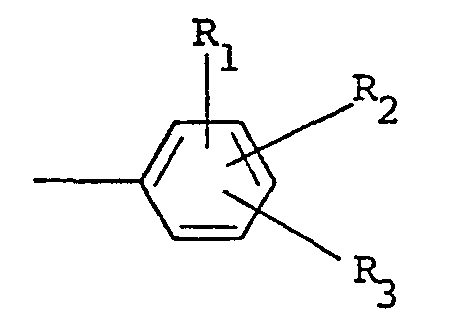
où R, et R2 sont indépendamment choisis parmi l'hydrogène et un halogène, R3 est choisi parmi l'hydrogène, un halogène, un groupe amino, nitro, trifluorométhyle, alkyle ayant 1 à 5 atomes de carbone, alcoxy ayant 1 à 5 atomes de carbone, phtalimido et COOR4, où R4 est l'hydrogène ou un groupe alkyle ayant 1 à 5 atomes de carbone, X est un halogène et n vaut 0 ou 1.
où R est choisi parmi un groupe alkyle ayant 1 à 5 atomes de carbone, alkényle ayant 1 à 5 atomes de carbone, hydroxyalkyle ayant 1 à 5 atomes de carbone, haloalkyle ayant 1 à 5 atomes de carbone, haloalkényle ayant 1 à 5 atomes de carbone, benzyle, quinolyle et
où R, et R2 sont indépendamment choisis parmi l'hydrogène et un halogène, R3 est choisi parmi l'hydrogène, un halogène, un groupe amino, nitro, trifluorométhyle, alkyle ayant 1 à 5 atomes de carbone, alcoxy ayant 1 à 5 atomes de carbone, phtalimido et COOR4, où R4 est l'hydrogène ou un groupe alkyle ayant 1 à 5 atomes de carbone, X est un halogène et n vaut 0 ou 1.
2. Composé selon la revendication 1, caractérisé en ce que Ri, R2 et R3 représentent le chlore et n vaut zéro.
3. Composé selon la revendication 1, caractérisé en ce qu'il est formé par le 2-oxo-3-benzothiazoli-
neéthanethioate de S-(2'-quinolyle), le 2-oxo-3-benzothiazolineéthanethioate de S-[(m-phtalimido-(phényle)]
ou le 2-oxo-3-benzothiazolineéthanethioate de S-[(p-phtalimido-(phényle)].
4. Procédé pour inhiber la croissance de plantes indésirables, caractérisée en ce
qu'il consiste à appliquer au système de plante une quantité, efficace du point de
vue herbicide, d'un composé ayant la formule :

où R est choisi parmi un groupe alkyle ayant 1 à 5 atomes de carbone, alkényle ayant 1 à 5 atomes de carbone, hydroxyalkyle ayant 1 à 5 atomes de carbone, haloalkyle ayant 1 à 5 atomes de carbone, haloalkényle ayant 1 à 5 atomes de carbone, benzyle, quinolyle et
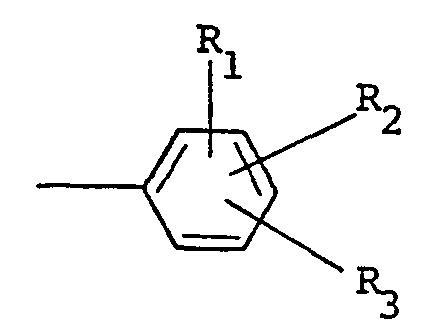
où R, et R2 sont indépendamment choisis parmi l'hydrogène et un halogène, R3 est choisi parmi l'hydrogène, un halogène, un groupe amino, nitro, trifluorométhyle, alkyle ayant 1 à 5 atomes de carbone, alcoxy ayant 1 à 5 atomes de carbone, phtalimido et COOR4, où R4 est l'hydrogène ou un groupe alkyle ayant 1 à 5 atomes de carbone, X est un halogène et n vaut zéro ou un.
où R est choisi parmi un groupe alkyle ayant 1 à 5 atomes de carbone, alkényle ayant 1 à 5 atomes de carbone, hydroxyalkyle ayant 1 à 5 atomes de carbone, haloalkyle ayant 1 à 5 atomes de carbone, haloalkényle ayant 1 à 5 atomes de carbone, benzyle, quinolyle et
où R, et R2 sont indépendamment choisis parmi l'hydrogène et un halogène, R3 est choisi parmi l'hydrogène, un halogène, un groupe amino, nitro, trifluorométhyle, alkyle ayant 1 à 5 atomes de carbone, alcoxy ayant 1 à 5 atomes de carbone, phtalimido et COOR4, où R4 est l'hydrogène ou un groupe alkyle ayant 1 à 5 atomes de carbone, X est un halogène et n vaut zéro ou un.
5. Procédé selon la revendication 4, caractérisé en ce que R1' R2 et R3 représentent le chlore et n vaut zéro.
6. Procédé selon la revendication 4, caractérisé en ce que le composé est le 2-oxo-3-benzothiazoli-
neéthanethioate de S-(2'-quinolyle), le 2-oxo-3-benzothiazolineéthanethioate de S-[(m-phtalimido-(phényle)]
ou le 2-oxo-3-benzothiazolineéthanethioate de S-[(p-phtalimido-(phényle)].
7. Procédé pour régler la croissance de plantes légumineuses, caractérisé en ce qu'il
consiste à appliquer, au système de plante, une quantité efficace, non léthale, d'un
composé ayant la formule :

où R est choisi parmi un groupe alkyle, ayant 1 à 5 atomes de carbone, alkényle ayant 1 à 5 atomes de carbone, hydroxyalkyle ayant 1 à 5 atomes de carbone, haloalkyle ayant 1 à 5 atomes de carbone, haloalkényle ayant 1 à 5 atomes de carbone, benzyle, quinonyle, et
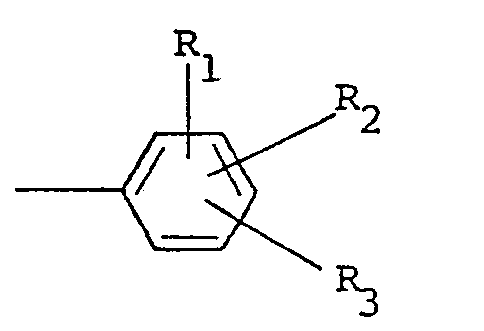
où R, et R2 sont indépendamment choisis parmi l'hydrogène et un halogène, R3 est choisi parmi l'hydrogène, un halogène, un groupe amino, nitro, trifluorométhyle, alkyle ayant 1 à 5 atomes de carbone, alcoxy ayant 1 à 5 atomes de carbone, phtalimido et COOR4, où R4 est l'hydrogène ou un groupe alkyle ayant 1 à 5 atomes de carbone, X est un halogène et n vaut zéro ou un.
où R est choisi parmi un groupe alkyle, ayant 1 à 5 atomes de carbone, alkényle ayant 1 à 5 atomes de carbone, hydroxyalkyle ayant 1 à 5 atomes de carbone, haloalkyle ayant 1 à 5 atomes de carbone, haloalkényle ayant 1 à 5 atomes de carbone, benzyle, quinonyle, et
où R, et R2 sont indépendamment choisis parmi l'hydrogène et un halogène, R3 est choisi parmi l'hydrogène, un halogène, un groupe amino, nitro, trifluorométhyle, alkyle ayant 1 à 5 atomes de carbone, alcoxy ayant 1 à 5 atomes de carbone, phtalimido et COOR4, où R4 est l'hydrogène ou un groupe alkyle ayant 1 à 5 atomes de carbone, X est un halogène et n vaut zéro ou un.
8. Procédé selon la revendication 7, caractérisé en ce que R1,R2 et R3 représentent le chlore et n vaut zéro.
9. Procédé selon la revendication 7, caractérisé en ce que le composé est le 2-oxo-3-benzothiazoli-
neéthanethioate de S-(2'-quinolyle), le 2-oxo-3-benzothiazolineéthanethioate de S-[(m-phtalimido-(phényle)]
ou le 2-oxo-3-benzothiazolineéthanethioate de S-[(p-phtalimido-(phényle)].
10. Composition chimique pour l'agriculture, caractérisée en ce qu'elle contient 1
à 99 parties en poids d'un composé ayant la formule :

où R est choisi parmi un groupe alkyle ayant 1 à 5 atomes de carbone, alkényle ayant 1 à 5 atomes de carbone, hydroxyalkyle ayant 1 à 5 atomes de carbone, haloalkyle ayant 1 à 5 atomes de carbone, haloalkényle ayant 1 à 5 atomes de carbone, benzyle, quinolyle et
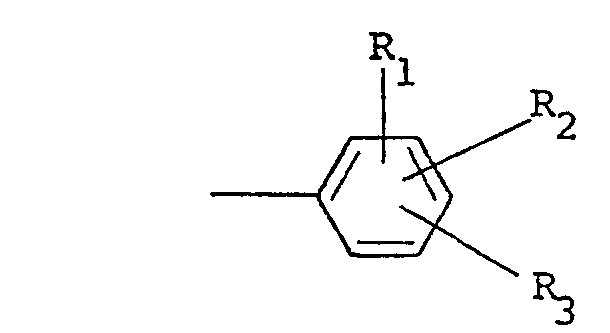
où R, et R2 sont indépendamment choisis parmi l'hydrogène et un halogène, R3 est choisi parmi l'hydrogène, un halogène, un groupe amino, nitro, trifluorométhyle, alkyle ayant 1 à 5 atomes de carbone, alcoxy ayant 1 à 5 atomes de carbone, phtalimido et COOR4, où R4 est l'hydrogène ou un groupe alkyle ayant 1 à 5 atomes de carbone, X est un halogène et n vaut zéro ou un, les parties restantes étant formées d'un ou de plusieurs supports, diluants et/ou adjuvants convenables.
où R est choisi parmi un groupe alkyle ayant 1 à 5 atomes de carbone, alkényle ayant 1 à 5 atomes de carbone, hydroxyalkyle ayant 1 à 5 atomes de carbone, haloalkyle ayant 1 à 5 atomes de carbone, haloalkényle ayant 1 à 5 atomes de carbone, benzyle, quinolyle et
où R, et R2 sont indépendamment choisis parmi l'hydrogène et un halogène, R3 est choisi parmi l'hydrogène, un halogène, un groupe amino, nitro, trifluorométhyle, alkyle ayant 1 à 5 atomes de carbone, alcoxy ayant 1 à 5 atomes de carbone, phtalimido et COOR4, où R4 est l'hydrogène ou un groupe alkyle ayant 1 à 5 atomes de carbone, X est un halogène et n vaut zéro ou un, les parties restantes étant formées d'un ou de plusieurs supports, diluants et/ou adjuvants convenables.
11. Composition selon la revendication 10, caractérisée en ce que R1, R2 et R3 représentent le chlore et n vaut zéro.
12. Composition selon la revendication 10, caractérisée en ce que le composé est le
2-oxo-3-benzothiazolineéthanethioate de S-(2'-quinolyle), le 2-oxo-3-benzothiazolineéthanethioate
de S-[(m-phtalimido-(phényle)] ou le 2-oxo-3-benzothiazolineéthanethioate de S-[(p-phtalimido-(phényle)].
